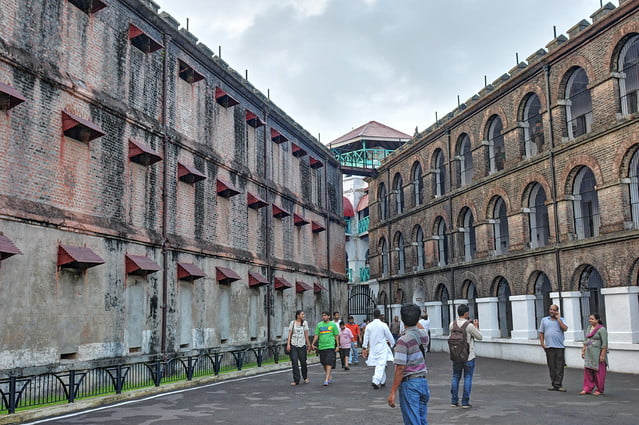Beautiful Andaman and Nicobar islands
Introduction
Beautiful Andaman and Nicobar Islands: Explore the Serene Beauty and Adventure. Immerse yourself in the pristine beaches, delve into the historical significance, and embark on thrilling activities in this tropical paradise. Plan your unforgettable journey to this enchanting archipelago, filled with stunning landscapes and vibrant marine life. Discover the breathtaking Radhanagar Beach, delve into the history of the Cellular Jail, and indulge in thrilling water sports and snorkeling adventures. Whether you seek relaxation, cultural experiences, or adrenaline-pumping activities, the Andaman and Nicobar Islands offer a perfect blend of tranquility and adventure. Start planning your dream getaway today.

“Timeless Craftsmanship: Discover the Allure of Andaman’s Traditional Wooden Boats.”
Overview of the geographical location and significance
Nestled in the Bay of Bengal, the Andaman and Nicobar Islands form a breathtaking archipelago in the Indian Ocean. With their strategic location and natural beauty, these islands hold immense geographical and ecological significance, making them a coveted destination for nature lovers and adventure seekers.
1.Archipelago of Islands:
The Andaman and Nicobar Islands comprise a total of 572 islands, out of which only a few are inhabited. The largest among them are North Andaman, Middle Andaman, South Andaman, and Little Andaman. The islands are scattered across an area of approximately 8,250 square kilometers, offering diverse landscapes ranging from pristine beaches and dense forests to majestic mountains and mangrove creeks.
2.Biodiversity Hotspot:
The islands are recognized as one of the world’s most biodiverse regions, harboring a remarkable variety of flora and fauna. The lush forests are home to several endemic and endangered species, including the Nicobar megapode, Andaman wood pigeon, and the Andaman day gecko. The surrounding marine ecosystems boast vibrant coral reefs, marine turtles, dugongs, and an abundance of fish species.
3.Coral Reefs and Marine Life:
The Andaman and Nicobar Islands are renowned for their spectacular coral reefs, which are part of the Coral Triangle, a global center of marine biodiversity. Snorkelers and divers flock to the islands to explore the colorful coral gardens and encounter a kaleidoscope of marine life, including reef fish, rays, sharks, and even dolphins. The islands also serve as nesting grounds for various sea turtle species, including the endangered Olive Ridley turtles.
4.Strategic Location:
The islands’ strategic location in the Bay of Bengal has played a significant role throughout history. They are positioned at the crossroads of major shipping routes, making them a vital maritime hub. Additionally, the islands’ proximity to countries like Myanmar and Thailand adds to their geopolitical importance.
5.Tourism and Conservation:
The Andaman and Nicobar Islands have gained popularity as a tourist destination due to their natural beauty and unique experiences. The local administration has taken steps to promote sustainable tourism and conservation efforts to preserve the fragile ecosystems. Several protected areas, national parks, and wildlife sanctuaries have been established to safeguard the islands’ natural treasures.
The Andaman and Nicobar Islands’ geographical location and ecological significance make them a treasure trove for nature enthusiasts, researchers, and adventure seekers. Whether you’re drawn to the pristine beaches, fascinated by the vibrant marine life, or intrigued by the islands’ historical and cultural heritage, this captivating archipelago promises an unforgettable journey into nature’s wonders.

Brief history of the islands
The Andaman and Nicobar Islands have a rich and captivating history that spans centuries. From ancient indigenous settlements to colonial rule, the islands have witnessed the ebb and flow of various civilizations, leaving behind a legacy that adds to their cultural significance.
1.Indigenous Tribes:
The islands have been inhabited by indigenous tribes for thousands of years. These tribes, including the Jarawas, Sentinelese, Onge, and Great Andamanese, have a deep connection with the land and have preserved their unique customs, traditions, and languages. They provide a glimpse into the ancient heritage of the islands and their longstanding human presence.
2.European Arrival:
The islands first caught the attention of Europeans during the 16th century. The arrival of the Portuguese, followed by the Dutch and the British, marked the beginning of the islands’ colonial era. The British East India Company established a penal settlement in the Andaman Islands in the early 19th century, primarily using the islands as a penal colony for Indian freedom fighters and other prisoners.

3.Cellular Jail:
One of the significant landmarks of the islands’ history is the Cellular Jail in Port Blair. Built by the British in 1906, this infamous prison served as a place of incarceration for political prisoners during the struggle for India’s independence. The jail’s harsh conditions and brutal treatment inflicted upon the prisoners became a symbol of the freedom movement, reminding the world of the sacrifices made by the freedom fighters.
4.World War II:
During World War II, the Andaman and Nicobar Islands witnessed intense conflict. The islands were occupied by the Japanese forces, who established their military bases there. The remnants of this occupation can still be seen in places like Ross Island, where the Japanese bunkers and structures stand as reminders of the wartime period.
5.Independence and Beyond:
After India gained independence in 1947, the Andaman and Nicobar Islands became a part of the Indian Union. Since then, the islands have undergone significant development and have become a popular tourist destination, known for their natural beauty, historical landmarks, and diverse cultural heritage.
Today, the Andaman and Nicobar Islands stand as a testament to their resilient past and the convergence of diverse cultures. Exploring the islands’ history allows visitors to connect with the roots of the region, appreciate its heritage, and understand the journey that has shaped the islands into the captivating destination they are today.


